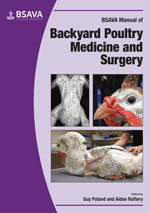
Full text loading...

Modern commercial chickens and ducks are able to lay all year round. This ‘chronic’ ovulation and laying activity results in the high incidence of inflammatory, neoplastic and infectious diseases of their reproductive tracts. Aside from disorders of the female and male reproductive tracts, this chapter also covers incubation, hatching, embryo and chick mortality, care of hatchlings and common paediatric problems.
Reproductive and laying disorders, Page 1 of 1
< Previous page | Next page > /docserver/preview/fulltext/10.22233/9781910443194/9781910443194.17-1.gif

Full text loading...














